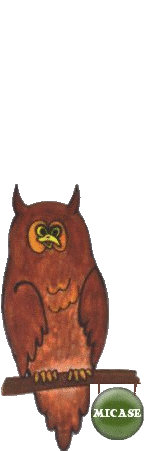

3. SequencingIn this section you will learn how to organize, or sequence your presentation. It is always a good idea to tell the audience in which order you are going to present the content of your talk.
Video clip 3: SequencingNow watch the third part of the presentation. Then read the instructions to the exercises below, watch the clip again and answer the questions.
Exercise A: Transitional devicesIf you need to see the table of transitional devices again, click
here. Exercise B: Linking expressionsWatch the clip and listen for the language items that fit the categories below. Write the expressions into the appropriate box.
 Exercise C: Outlining by using numbered pointsA presentation can be outlined successfully by using numbered points,
for example ‘first’, ‘second’ and so on. Watch
the clip and pay attention to how the speaker outlines/sequences
his presentation and then complete the exercises in the box below. Everything in order? Let's then move on to the fourth section. Supporting the topic. |